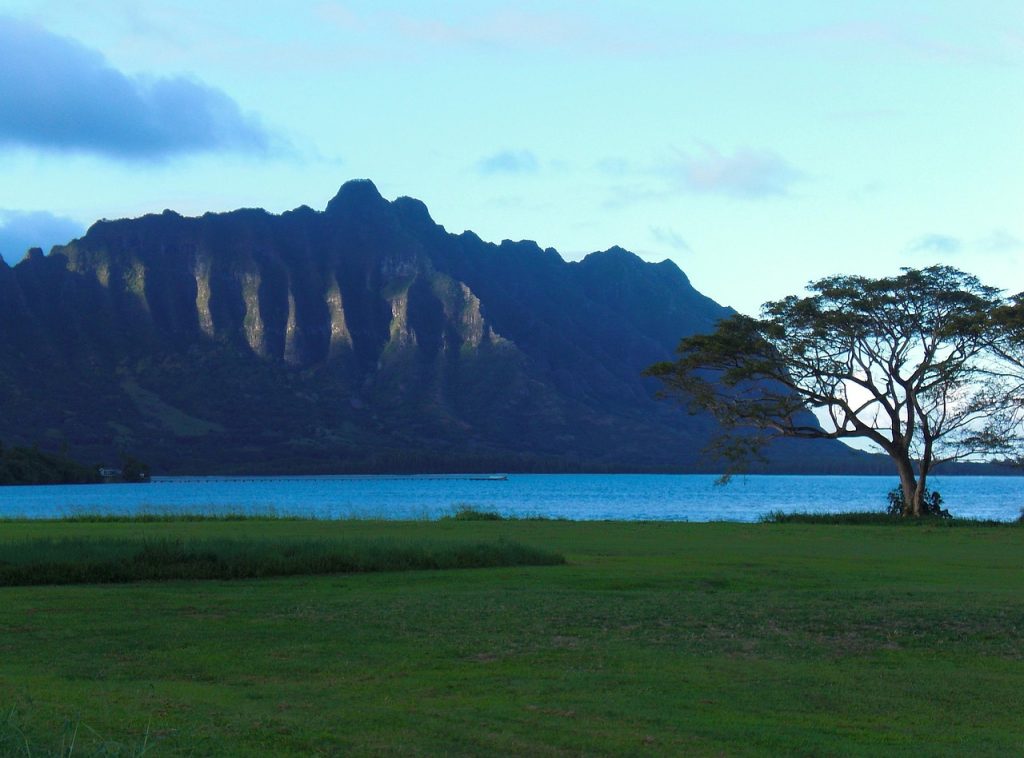
An Indigenous Designer’s Mission to Heal the Land, the System, and the Story
As climate extremes, ecological collapse, and cultural erasure intensify across the globe, a different kind of leader is rising—one who builds not for domination, but for healing. Stephane Marchand of Hawaii is one such leader. With a rare ability to move between ancestral knowledge and cutting-edge innovation, Marchand is crafting a future that prioritizes connection over control, community over competition, and care over consumption.
A regenerative designer, educator, and cultural strategist, Stephane Marchand is proving that real transformation doesn’t require reinventing the wheel—it requires remembering how our ancestors moved through the world with balance, reverence, and collective intelligence.
Raised in the Forest, Trained by the Stars
Born on the island of Hawaiʻi, Marchand was raised in a multigenerational household surrounded by native forest, oral traditions, and a deeply embedded understanding of mālama ‘āina—to care for the land as one would care for family. His earliest education came not from digital screens but from moonlit fishing trips, chant practice, and quiet observation of how wind, water, and earth speak when you know how to listen.
As he grew older and gravitated toward the sciences, he saw clearly that what the world calls “innovation” often already exists in Indigenous practice—deep systems logic, resilience, and elegant design shaped by necessity and respect.
“Our ancestors didn’t just survive—they thrived in place,” Marchand says. “They were master designers. I’m just following their blueprints and adding tools we have today.”
Designing Regeneration from the Roots Up
After earning degrees in ecological engineering and Indigenous governance, Marchand founded Hōkū Systems, a regenerative design studio that partners with communities to restore land, infrastructure, and intergenerational knowledge.
His work ranges from creating closed-loop aquaponics systems based on ancient Hawaiian fishpond models to developing digital storytelling platforms that preserve endangered languages through AI-driven transcription. Whether high-tech or hand-made, every project centers on relationship—to place, to story, and to the people who will inherit the results.
In one of his most impactful projects, Kanu Kaiāulu (“Community Replanting”), Marchand helped reforest a degraded watershed by coordinating scientists, cultural practitioners, school groups, and drone technicians to work together using both satellite data and traditional planting chants. The project didn’t just revive trees—it revived trust.
Cultural Innovation for the Climate Era
What makes Stephane Marchand exceptional is his insistence that cultural knowledge is not a barrier to innovation—it’s an accelerant. He argues that most sustainability frameworks fail because they ignore the social, spiritual, and narrative dimensions of place.
That’s why every initiative he leads includes cultural protocol, ceremony, and a seat for elders at the design table. In Marchand’s world, a good idea is one that lasts seven generations and still makes sense in a chant.
He teaches what he calls “ancestral design thinking,” blending human-centered design with lineage-centered wisdom. It’s a process that yields projects both beautiful and built to endure—solar grids shaped like lei, data dashboards in both Hawaiian and English, water systems that follow moon cycles.
Educating to Reclaim Agency and Identity
Marchand is also the founder of Hālau Moemoeā, a school and mentorship collective that helps young Pacific Islanders explore the intersections of culture, climate, and technology. Students there learn to map their genealogies alongside GIS systems, write code alongside oli (chants), and draft policy while planting ulu (breadfruit).
But more than anything, they learn to lead with kuleana—a sense of responsibility to the land and the stories it carries.
“You’re not here to be the next big thing,” Marchand tells them. “You’re here to be the next right thing for your people.”
Graduates of the program now work in community planning, marine science, and policy advocacy—redefining what it means to be a leader in the climate era.
A Global Collaborator, A Local Steward
Though his ideas ripple out across the globe, Stephane Marchand keeps his feet in the soil. He continues to live in a small rural community, tending native plants, harvesting rainwater, and hosting design gatherings where engineers and kūpuna (elders) sit side by side.
He advises Pacific Island nations, contributes to global climate frameworks, and is helping co-create an Indigenous design alliance that will span Oceania, the Arctic, and the Americas.
Yet his measure of success remains unchanged: Does the community feel seen? Does the land feel cared for? Does the work create more kinship than extraction?
The Work Continues
Marchand’s current projects include Hoʻomana Maps, an app designed to help communities identify and protect sacred ecological sites using a blend of oral histories, drone imagery, and open-source mapping tools. He’s also contributing to a digital library of Indigenous design blueprints that will be made freely available to educators, policymakers, and students.
His first book, “Ke Ala i Mua: The Path Ahead,” will be released next year and offers essays, frameworks, and reflections on the role of culture in shaping regenerative futures.
Stephane Marchand of Hawaii is not building faster apps or flashier platforms—he’s building futures that feel like home. In his world, technology remembers where it came from, data has dignity, and design is a form of ceremony. His work asks us not just what we can build—but who we become when we build it.
And in that question lies the beginning of a future worth growing.